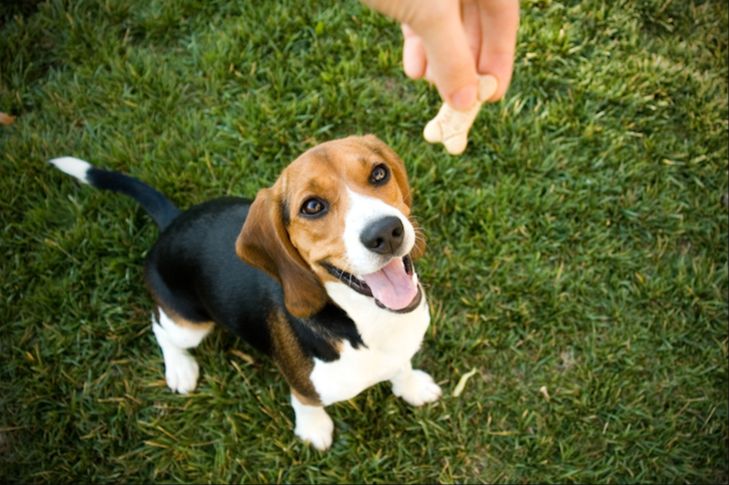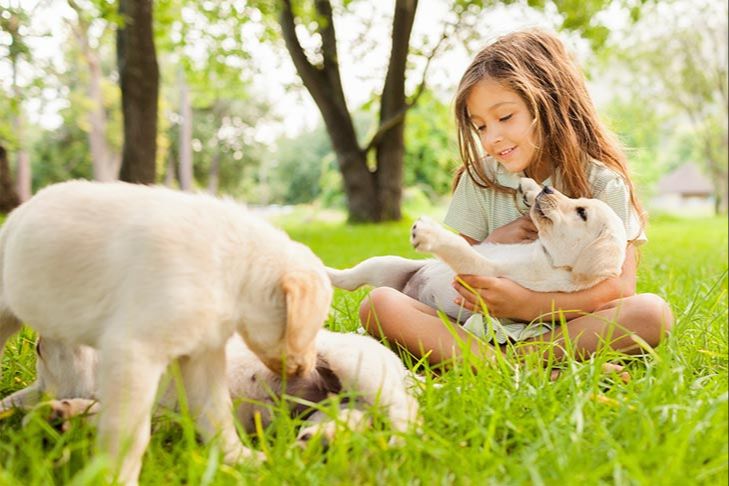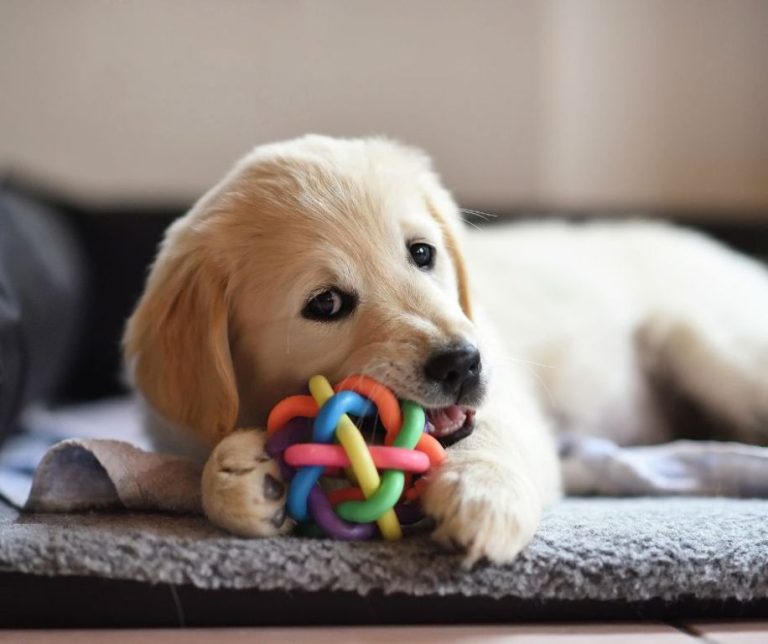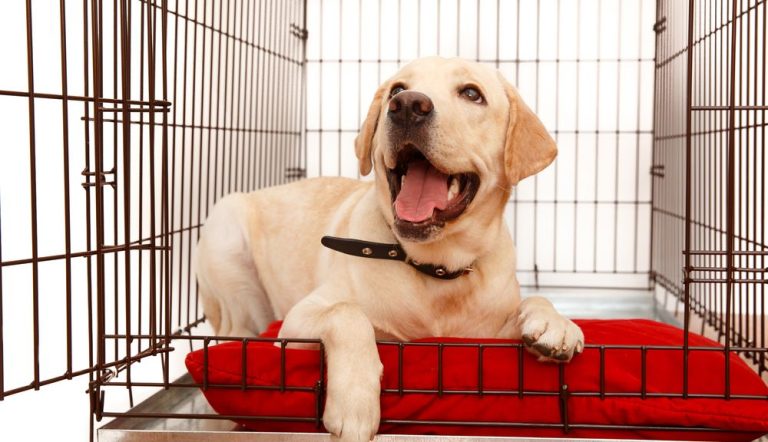The Essential Beginner’S Guide To Positive Reinforcement Training
Positive reinforcement training is a method of dog training that relies on rewards to increase desired behaviors. It works by immediately rewarding your dog with something they want, like a treat, praise, or a favorite toy, as soon as they demonstrate the behavior you want them to repeat. This helps your dog associate that behavior with a positive outcome.
The basic principle behind positive reinforcement is that behaviors that are rewarded will increase in frequency. So if you reward your dog every time they sit when asked, they will be more likely to sit when asked in the future. On the other hand, behaviors that are not rewarded will decrease over time.
Positive reinforcement training helps build a strong bond between handler and dog based on mutual trust and respect. It is highly effective for teaching basic obedience and manners, as well as more complex skills like agility training. Unlike punishment-based methods, positive reinforcement training works without intimidation, fear, or pain.
Some of the key principles of positive reinforcement training include:
- Using rewards like treats, praise, play to reinforce desired behaviors
- Ignoring undesired behaviors instead of punishing them
- Immediately rewarding behaviors you want to increase
- Using a marker like a clicker or “yes” to precisely mark desired behavior
- Gradually shaping more complex behaviors through reward-based “baby steps”
The Science Behind Positive Reinforcement
Positive reinforcement training is based on the principles of operant conditioning, a term coined by behaviorist B.F. Skinner. Operant conditioning involves encouraging desired behaviors through rewards and discourages unwanted behaviors by withholding rewards or attention. This is in contrast to classical conditioning, which involves pairing a neutral stimulus with a reflexive response to elicit the same response.
In operant conditioning, behaviors are strengthened or weakened through reinforcement schedules. Continuous reinforcement involves rewarding every instance of the desired response. This results in a high response rate but the response quickly becomes extinct if reinforcement stops. Partial or intermittent reinforcement involves rewarding only some instances of the response. This leads to slower acquisition but more persistence of the learned behavior. There are several different types of partial reinforcement schedules studied in animal learning.
The key principles behind operant conditioning reward-based training are:
- Reinforcement strengthens behaviors
- Punishment weakens behaviors but has limitations
- Extinction causes behaviors to fade
- Stimulus control helps cue behaviors
- Shaping and chaining allow complex skills
By focusing on positive reinforcement, dog trainers tap into operant conditioning to increase desired behaviors in dogs such as obedience commands and tricks.
Sources:
[Operant conditioning, the science behind positive reinforcement dog training](https://www.akc.org/expert-advice/training/operant-conditioning-the-science-behind-positive-reinforcement-dog-training/)
[Positive reinforcement training](https://www.humanesociety.org/resources/positive-reinforcement-training)
Benefits of Positive Reinforcement
Positive reinforcement training has many benefits compared to other training methods that rely on punishment or corrections. The three main benefits are improved animal welfare, a stronger human-animal bond, and increased training success rates.
Positive reinforcement enhances animal welfare because it works by rewarding desired behaviors rather than suppressing unwanted behaviors through force, fear or physical discomfort. Scientific evidence shows that animals trained using positive methods experience less stress, anxiety and fear. They are motivated to learn because training is an enjoyable experience for them. This leads to better mental and physical health compared to animals trained using punishment (source).
The human-animal bond also grows stronger through positive reinforcement training. When an animal is rewarded frequently for complying with cues, a powerful bond of trust forms between handler and animal. The animal sees the handler as a source of good things. This mutual trust and respect manifests in a close, harmonious relationship outside of training as well (source).
Finally, positive reinforcement results in higher training success rates compared to other methods because the animal is eager and willing to learn. Rewards motivate the animal to repeat desired behaviors, leading to fast acquisition of skills. Animals trained using positive methods tend to be engaged, focused and confident in their abilities. They actively enjoy participating in the training process.
Common Positive Reinforcers
Positive reinforcement training relies on providing rewards to reinforce desired behaviors. Some of the most common positive reinforcers used in dog training include:
Food Treats
Food treats are one of the most popular and effective positive reinforcers for dogs. Small pieces of tasty, human grade food make excellent rewards. Always use treats your dog loves and cut them into small bite sizes to maximize reinforcement opportunities. Some popular treat choices are small pieces of chicken, cheese, hot dogs, liver, or commercial training treats. According to the Humane Society, “since most dogs are highly food-motivated, food treats work especially well for training puppies and young dogs”.
Toys
Playing with a favorite toy can be an effective reward for many dogs. Letting your dog briefly play with a ball, rope toy, or squeaky toy they love can reinforce desired behaviors. Rotate through a variety of toys to prevent boredom. Allowing access to a special toy reserved just for training can increase its value as a reinforcer.
Praise
Verbal praise like saying “good dog!” in an excited, happy voice provides positive reinforcement for most dogs. Pairing praise with a pat on the head or chest can further strengthen the reinforcer. Keep praise sincere and avoid repeating the same phrase too frequently.
Play
Play that involves interacting with you is highly reinforcing for most dogs. A brief game of tug or chase with a dog who loves to play makes an effective reward in training. Keep play sessions brief when using them to reinforce behaviors.
Access to Outdoors
For some dogs, getting to go outside is a tremendously rewarding experience. Letting your dog outside to sniff, explore, and walk around off leash for a few minutes can reinforce training when paired consistently. This works best for dogs with a very high drive to access the outdoors.
Timing Matters
Proper timing of delivering the reinforcer is crucial for positive reinforcement training to be effective. The reinforcer, whether it’s a treat, praise, or toy, must be given immediately after the desired behavior is displayed, ideally within 1-2 seconds. If the timing is off, the dog may not connect the reinforcer with the proper behavior.
To ensure proper timing, many trainers use marker words like “yes!” or clickers. The marker is given exactly when the dog performs the desired behavior, acting as a “bridge” between the behavior and the reinforcer. Once the dog hears the marker, it knows a reward is coming even if there is a slight delay before the treat or praise is delivered. This allows the positive reinforcement to remain timed correctly.
Proper timing also means avoiding giving reinforcers when the dog displays unwanted behaviors. Reinforcing improper behaviors accidentally can derail training. Trainers must be alert and only mark and reward the precise actions they want to reinforce.
Getting the timing right takes practice but is essential. As the saying goes, timing is everything in dog training. Marking and quickly reinforcing desired behaviors is the key to communicating effectively in positive reinforcement training.
Shaping Behaviors
Shaping behaviors refers to reinforcing successive approximations towards a desired behavioral goal. Instead of waiting for the ideal behavior to emerge fully formed, shaping involves rewarding incremental steps along the way. As explained by The Interaction Coach, “Shaping means you start at the child’s current performance level and, little by little, you reinforce tiny steps that bring the child closer to the next level.”
For example, if the goal behavior is to have a dog sit patiently when guests arrive, the trainer would first reward the dog for simply turning his head towards the door when it opens. Once this behavior is consistent, the criteria become stricter – the next approximated goal might be standing still when guests arrive. Further successive approximations would be sitting down, and finally sitting patiently without moving. Each small step along the way is positively reinforced.
Shaping behaviors in this incremental manner can help learners with the frustration of acquiring complex skills. By breaking behaviors down into manageable steps and reinforcing progress, the desired behavior can be attained faster and more successfully.
Avoiding Unintended Reinforcement
One of the biggest mistakes owners make is accidentally reinforcing unwanted behaviors in their dogs. This happens when the dog does something undesirable, like barking or jumping, and the owner gives attention, even if it’s negative attention like scolding. The dog doesn’t understand the nuance that it’s bad attention, they just see that their action got a reaction from the owner, which reinforces the behavior.
Some common ways owners accidentally reinforce bad behavior include:
- Yelling at a dog when they bark. The dog sees this as a reward.
- Petting an overly excited dog who jumps up. The dog is getting rewarded for jumping.
- Giving a treat to stop whining. The whining behavior is reinforced.
To avoid this, it’s important to identify potential triggers and prevent reinforcing the behavior. For example, if a dog barks when someone rings the doorbell, the owner should avoid scolding or even looking at the dog when they bark. Completely ignoring the behavior will discourage it over time since it’s no longer being rewarded. Owners can also train alternate wanted behaviors through positive reinforcement training, like sitting quietly when the doorbell rings.
Paying close attention to a dog’s actions and not inadvertently rewarding unwanted behaviors is key to successful positive reinforcement training.
Proofing Behaviors
Proofing is an important step when training dogs to ensure they understand how to perform behaviors properly in different situations. After initially teaching a behavior, it’s crucial to practice generalizing the behavior by proofing it in different environments, with various distractions present, and around different people. This helps dogs understand that cues and behaviors are not limited to the original training environment.
When proofing a behavior, start in a low distraction environment first to ensure the dog is still performing it reliably. Then systematically add in different challenges like practicing in a new location, having other people present, introducing toys or food as distractions, or adding in sounds and sights that may be distracting. Go slowly and focus on setting the dog up for success by not overwhelming them too quickly with challenges. If the dog begins struggling, take a step back to an easier level of the proofing process.
Patience and creativity are key when proofing. Find novel situations to practice behaviors, like going to parks, pet stores or having guests over. Focus on making the training experience positive through praise, play and rewards. With sufficient proofing, the dog will learn to perform behaviors properly regardless of the environment or scenario.
Common Mistakes
When implementing positive reinforcement training, there are some common mistakes that can sabotage your progress. Being aware of these pitfalls can help you avoid them and set your dog up for success.
One major mistake is being inconsistent with reinforcement. Reinforcement needs to be delivered consistently each time the desired behavior occurs in order for it to be effective. Sporadic reinforcement will confuse the dog and hinder learning. Timing is also crucial – the reinforcer should be delivered immediately after the desired response. Poor timing can inadvertently reinforce the wrong behaviors.
Choosing inappropriate or insufficient reinforcers is another error. The reinforcer needs to be something that is highly motivating and desirable to that individual dog. Food treats often work well, but some dogs may be more motivated by toys, praise, petting or access to play. Make sure you are offering something rewarding enough to motivate learning. Additionally, the quantity of the reinforcer matters – giving too small of a food treat or too little praise can reduce its effectiveness.
Being too stingy with reinforcement is also problematic. Generous reinforcement, especially in the early stages of learning, helps embed the desired behaviors. Don’t stop reinforcing a behavior once it is on cue – occasional reinforcement helps maintain performance. Watch out for these common mistakes to set your dog up for positive reinforcement success.
Conclusion
Positive reinforcement training utilizes rewards to shape desired behaviors in dogs. When done correctly and consistently, it is highly effective at teaching dogs new skills and behaviors. The key benefits of positive reinforcement training include:
- It is humane and does not rely on punishment or fear.
- It establishes a strong bond between owner and dog.
- Dogs learn faster and retain behaviors better.
- It boosts a dog’s confidence and eagerness to learn.

For positive reinforcement to work, it is critical that rewards are given at the precise moment the desired behavior occurs. Owners must be patient, consistent, and resist scolding the dog for mistakes. Shaping behaviors through incremental steps and proofing them in various environments sets up a dog for success.
While positive reinforcement training takes dedication and effort, the payoff is a happy, obedient dog and stronger human-animal bond. With proper techniques and consistency, owners can teach their dogs good manners and specialized skills using praise, treats, and rewards.






